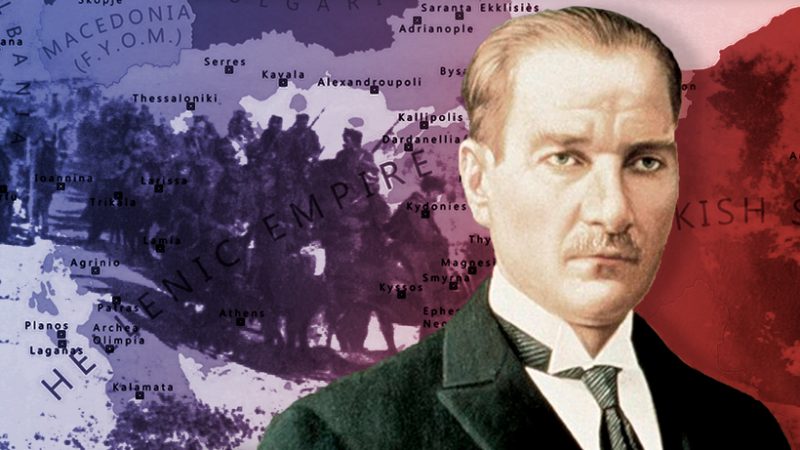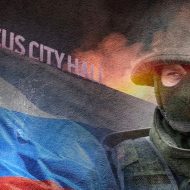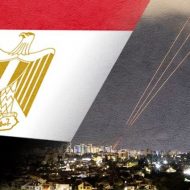The respected British historian Professor Bernard Lewis once said: “It is very important to know the history in order to see the future. Whatever memory is for the individual, it is the history for a nation. A nation that distorts its history is like a neurotic person, and a nation that does not know its history is like a person who has amnesia.” I have prepared this article exactly in parallel with this perspective, for the government of our neighbor Greece. They need to know their history, and especially their near history well. They repeat the same mistakes they did a century ago. The megalomanic attitude of their politicians, the nationwide indoctrination combined with the Megali Idea, they eventually face a major catastrophe. And it is the Greek people who suffer from this. The things that happened between 1919 and 1922, exactly 100 years ago, sheds light on today.
1919 Paris Peace Conference
The catastrophe and the beginning of a disastrous and a tragic end, began on February 3rd 1919, at the Paris Peace Conference, which ended the First World War, with a presentation by the Greek Prime Minister Eleftherios Venizelos to the Council of Four (the US President Woodrow Wilson, British Prime Minister Lloyd George, French Prime Minister George Clemenceau, Italian Prime Minister Emanuele Orlando) that lasted for several hours and defended the pro-Greek theses. What he wanted was a large geography stretched from the Adriatic to almost all of Western Anatolia, to be left to Greece. With this presentation, Venizelos caused the displacement of Turkey’s traditional Greek minority and has ignited a great hostility between Greece and Turkey that still fvcontinues to this day.
The Fate-determining role of the Megalomania and the Megali Idea
Venizelos had fought in Crete’s movement for independence from the Ottoman Empire, in the past. He later entered politics and, as a war hero, he managed to rise to the seat of Prime Minister in 1910. Venizelos, who resembled himself with Pericles, the famous commander and statesman of 2300 years ago, and identified himself with Megali Idea, had such a great confidence since the most important turning point in Crete’s independence in 1897 was won despite the Turkish victory on the Greek mainland and since Greece easily won battles during the Balkan War. And this combination put up a megalomaniac synthesis. His main adversary at the conference was the Italian delegation, which was in a rivalry in the partition of both Albania and Anatolia. Izmir was offered to be ceded by both Greeks and Italians. Greece, which could not even be on the same league with Italy in the perspective of economic and national power, was playing an intriguing and trickery game. Greece was exploiting the geopolitical rivalries between Britain and the United States as well as France and Italy, trying to seize opportunity.
The Greek People that were pulled into a trap
In January 1915, while the Gallipoli and al-Kut defeats had yet not been happened, the British Foreign Secretary Edward Grey proposed a very large chunk of land off the coast of Asia Minor to Greece. In return, Greece was asked to help the Allies on the Serbian front. Greece, however, preferred to remain neutral. In February 1915, when Venizelos offered to send troops to Gallipoli alongside the Allies under such great pressure, the Greek King Constantine, whose wife was the sister of the German Kaiser, rejected the offer and dismissed Venizelos. In May 1915, the elections came again. The people chose Venizelos, who was in favor of war. In September 1915, he wanted to take Greece into war again and the King has removed Venizelos from the government once again. On May 26th 1916, when Bulgarians and Germans attacked from the north, the final straw came. On July 30th 1916, the Movement of National Defense was established, and Venizelos formed an opposition government, by fleeing to Crete first and then to Thessaloniki. King Constantine abdicated from the throne and King Alexander replaced him. Venizelos, who had moved to Athens on June 14th 1917, began preparations to enter the war and the Greek armies defeated Bulgarian and German forces in September 1918. Venizelos was now a victorious statesman. Now, the path for Venizelos to the Megali Idea was opened.
The Fate that Italians Shaped
The Italians invaded Antalya on March 28th 1919 and began to move north, as the Peace Conference continued. They had their own causes for this occupation. During the First World War, Russia, Britain and France agreed to give Italy an important part of Anatolia under the 1915 London agreement. However, the Sykes-Picot Agreement in 1916 did not adhere to that promise. In 1917, the French and the British gave the Italians a second chance to take a share, with the Saint Jean de Maurienne Agreement. However, Italian interests were ignored again by the thesis of British Foreign Secretary Balfour, as Russia was now not involved in the agreement. Greece would now fill that void.
The British Outrage and the Course of the History
At a meeting with the President of the United States and President of France at the beginning of May 1919, the British Prime Minister and a great admirer of the Hellenistic culture Lloyd George, put a pressure for a decision to be made for Izmir. He had seen the Italian invasion of Antalya and their occupation in the Southern Anatolia as madness. A conversation took place between them. Lloyd George: “If we do not act, the Italians will get away with what they took, and they will tear off a large chunk of Asia Minor. In the meantime, the Turks can slaughter the Greeks and we cannot do anything about it.” President Wilson replied: “In light of these events, why shall we not tell the Greeks to invade Izmir right now? Do you have any objections?” Lloyd George said, “No, I have no objections.” French Prime Minister Clemenceau said, “I have no objections, but we need to inform the Italians about this.”. Then, when the Italians asked, “Why do not the Allies take this task on their own?“, the answer they received was, “We shall not give our soldiers to the command of a Greek general.”
The Day of Decision
On May 6th 1919, Lloyd George asks The Greek Prime Minister Venizelos: “Are your troops ready?”. Venizelos: “Yes, they are. But for what?” Lloyd George: “The US President Wilson, French Prime Minister Clemenceau and I have decided you to invade Izmir.” Venizelos: “We are ready”, and that was the beginning of the end. Thus, the Greek forces would go to Izmir under the guarantee of the Allies. Their so-called justification was to ensure the safety of the Greek minority in and around Izmir. While all these decisions were being made, Venizelos’ opponent, General Metaxas, said: “The Greek Government is not ready to colonize and manage such a vast land.” Later on, the time would reveal that Metaxas was right. An American diplomat who observed the Peace Conference also opposed the Greek occupation of Izmir and its port, while saying: “Izmir is the eyes, mouth and nostrils of the Anatolian people.” The Italians were using the phrase “hollowed-out Hellenistic megalomania” against the Greeks, who argued that Hellenism was much older than the dream of the Roman Empire.
The British Also Disapprove the Decision
Being offered Izmir and most of Asia Minor, Greeks were previously criticized by some statesmen and commanders in Britain, who came first among the allied occupiers. On February 20th 1919, General George Milne, Commander of the British Occupation Forces in Istanbul, had to inform the War Cabinet that he expected a Turkish uprising if Izmir was invaded by the Greeks. Admiral Somerset Calthorpe, the High Commissioner of the Istanbul Occupation Forces, who negotiated the Mudros Armistice with the Ottoman Empire on behalf of Britain, said on 3 April 1919: “I sincerely hope that the Hellenic Empire will not stretch to the east coast of the Aegean Sea, because such a move will not bring a peace and prosperity, and instead the opposite.” Shortly after, on April 18th 1919, Lord Curzon wrote in his declaration as Acting Foreign Secretary, that challenges his own Prime Minister: “How can Greeks who cannot even maintain order five miles away from the gates of Thessaloniki, be allowed to occupy and manage a large city like Izmir and a vast province like Aydin?”
The Beginning of the Beginning of the End
Venizelos was quite optimistic about the invasion of Izmir. He assumed that the Turks would not put up any resistance. On the morning of April 12th 1919, the first attempt was made. Averof, the Greek cruiser that disposed of our Aegean Islands all by itself during the Balkan War, docked in Izmir and a battalion was landed ashore. There was no unrest in Izmir. A month later, on May 12th 1919, British Admiral Calthorpe left Istanbul for Izmir on the battleship HMS Iron Duke. He met the French Admiral at sea and landed on Izmir on the afternoon of May 13th. The French would occupy Foca, while the Italians Karaburun, the British Uzunada, and the Greeks would occupy the city center’s bastion. The US Navy also took part within the invasion fleet. The dark day began on May 15th 1919. Izmir was invaded. The shockwave of this occupation got so far that the Kuvayı Milliye (National Forces) Resistance, which started under the leadership of Mustafa Kemal Ataturk, got its main drive force from it. This occupation brought together the Turks, who were formerly politically shattered.
The Wrath of Churchill
Winston Churchill, who was British Secretary of the Navy during the war, described how wrong the decision to invade Izmir was in his later book World in Crisis: “I well remember the bewilderment and alarm with which I heard on a lovely afternoon in Paris of this fatal event. No doubt my personal views were affected by the consternation it produced upon the British General Staff. Making every allowance for the pro-Turk inclinations of the British military mind, it was impossible to excuse the imprudence of this violent act, which opened so many perils when our resources were shriveling… Our officers in twos and threes were all over Asia Minor supervising the surrender of armies and munitions as prescribed by the Armistice… Important ‘dumps’ of rifles, machine guns, cannon and shells were being submissively piled up; Turkey was under the spell of defeat, and of deserved defeat. ‘Let us be punished by our old friend England’… But from the moment that the Turkish nation -and, though Paris did not seem to know it, there was a nation- realized that it was not Britain and India and Allenby that they had to endure and for the time obey, but Greece, the hated and despised foe of generations -to their eyes a revolted province, certainly a frequently defeated opponent; from that moment, Turkey became uncontrollable. The British officers supervising the execution of the armistice terms were first ignored, then insulted, then chased for their lives or flung into arduous captivity… The ‘dumps’ in which the equipment of considerable armies was already gathered passed in a week from British to Turkish control; and Mustapha Kemal, the Man of Fate whom we have met in these volumes of the Gallipoli Peninsula in April and in August, 1915 -till then almost a rebel against the Turkish Government at Constantinople,- was furnished with the power, as he already possessed the qualities, of a Warrior Prince… That Greeks should conquer Turks was not a decree of Fate, which any Turk could recognize… Loaded with follies, stained with crimes, rotted with misgovernment, shattered by battle, worn down by long disastrous wars, his Empire falling to pieces around him, the Turk was still alive.”
The Cycle of Victories and Defeats
The process, which began with the invasion of Anatolia with 55 warships on the morning of November 13th 1918, and continued on May 15th when Greece invaded Izmir, the most important city in Anatolia to the outside world, triggered a great war of survival and independence under the leadership of Mustafa Kemal. On May 15th 1919, the Greek armies, who had triumphantly marched into Izmir with the confidence and the provocation of the West, had to withdraw on the morning of September 9th 1922, leaving behind the bodies of 40,000 young soldiers. They did not just retreat from the Anatolian lands. They had to flee. It was such a disorganized fallback that they did not even have the time to take retrieve who tried swim and board the warships that already left the port. One of the truths underlying beneath the hatred of Turkey and Ataturk of the Western imperialism today, is what happened in the port of Izmir that day.
The Lives Sacrificed for Megalomania
Let us go back a week earlier. On August 26th 1922, Greek 1. Army Corps Commander General Nikolaos Trikoupis wrote in his memoir, for September 2nd 1922 entry, 7 days after the Great Offensive of 26th August: “The commanders of smaller units reported that their soldiers did not want to fight against the Turks. Some had abandoned the defensive posts they held, in the beginning. Others said they would tie up their officers and hand them over to the Turks if they continued the offensive, because they would die for no real cause. When faced with this situation, I called the commander of the artillery battalion of the division, and ordered them to open fire on Turks. But the artillery barrage was not starting. A little later, I received the news: ‘Armed infantry has surrounded the artillery positions and said that if they opened fire on the Turks, they would shoot the artillery regiment themselves.‘ Their reasons were very simple. If the barrage did not start now, and when the Turks came, the Turks would take them prisoners. If the Turks came after the artillery barrage, they would slaughter them all. Faced with this dire situation, I had to order the destruction of artillery pieces and machine guns. Then we had to surrender.”
The Greek Troops Who Refused Support
On the morning of September 9th 1922, Greek reserve forces for the defense of Izmir and its nearby region were roughly consisting of a division. However, they were not in a position to save the retreating Greek Army. There were also the troops brought in from Thrace. These soldiers brought by ships, were not allowed to land in Urla. Greek soldiers had to watch the Turkish cavalry enter Izmir, from their ships.
The Heavy Blow from Mustafa Kemal
The Megali Idea’s venturous campaign in Asia Minor, fueled by Venizelos’s megalomania, ended in a great catastrophe and in shame. As a state that had been punched badly by Mustafa Kemal Ataturk in the Asia Minor Catastrophe, they had to deal with their own internal felons, by executing 6 statesman and generals, including their former Prime Minister Gounaris. But did they really learn their lessons?
Today, is in fact the Yesterday
Today, the political and psychosocial conjuncture, where Greece and the Southern Cyprus are in the context of the Eastern Mediterranean, is similar to the conditions of the 1919 Paris Conference. Today in Great Britain’s place, there is the United States and the EU especially France; in Venizelos’ place, there is Mitsotakis-Dendias duo, and Anastasiadis. At that time, such a weak assassin like Greece tried to attack a dying empire, as their proxy assassin. The blood that was spilled was neither British, nor French or American blood. The poor, jobless, and penurious peasant Greek youth died by the sword of Turks who struggle for their independence. The war of the Turks was a defense for their homeland. The Greek invaders were the hitmen of the imperialism. Today, they still take the job of being an assassin for an imperialist map, which is trying to isolate Anatolia from its Blue Homeland. They are trying to impose a vision on Turkey that is against the common sense, international law, basic logic and the actual facts, by taking the EU and the United States by their side. They are trying to provoke Turkey, by being more arrogant day by day.
Suggestions for Greece
This is an address to the Greek people. Know your history. Take lessons from them. Do not let those politicians who will take you on a venturous campaign. Look for ways to live together with the Turks peacefully in the Aegean Sea. Do not be fooled by the Megali Idea dreams of your government, which will not go further than a fantasy in today’s conditions, do not let their megalomanic attitudes take in charge.
Sources
Margaret Macmillian, Paris 1919, Six Months That Changed the World
Winston S. Churchill, The World Crisis, The Folio Society, London, 2007.
Bilge Umar, Yunanlıların ve Anadolu Rumlarının Anlatımıyla İzmir Savaşı, İnkılap Yayınları
G.A. Jaeschke, Mitteilungen der Deutsch-Türkischen Gesellschaft in Bonn Heft, 73 Marz 1968, İngiliz Belgelerinin Işığı Alltında Yunanlıların İzmir Çıkarması









Thank you for the history lesion .The great Othoman empire will revive again!
Sign
A Greek slave.